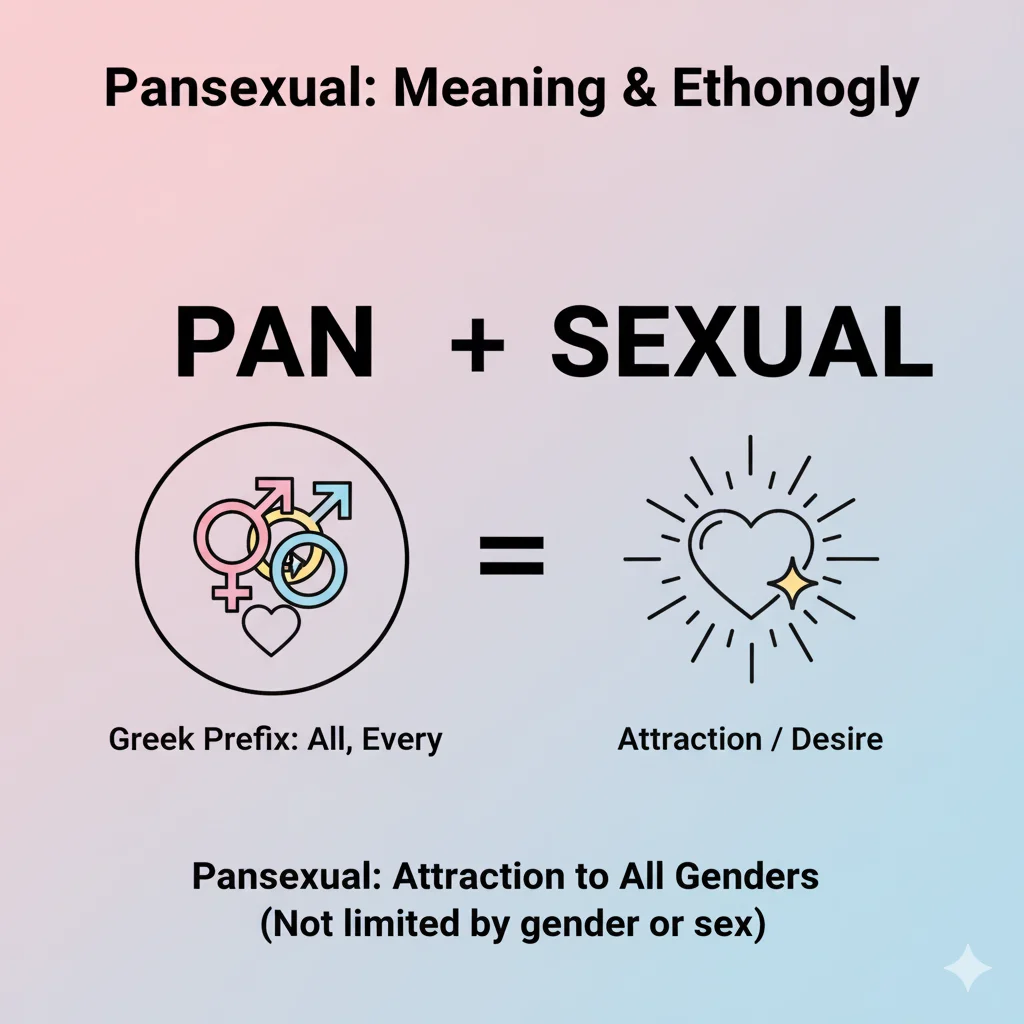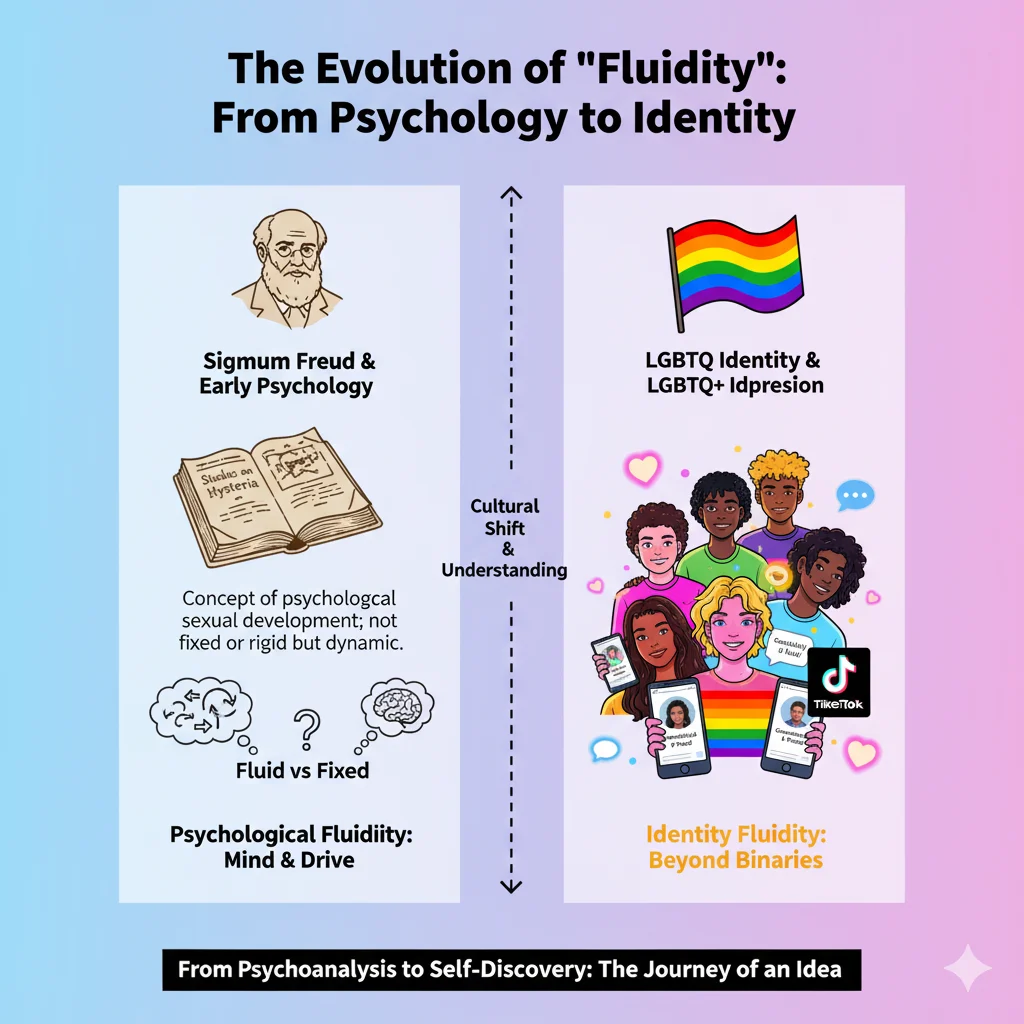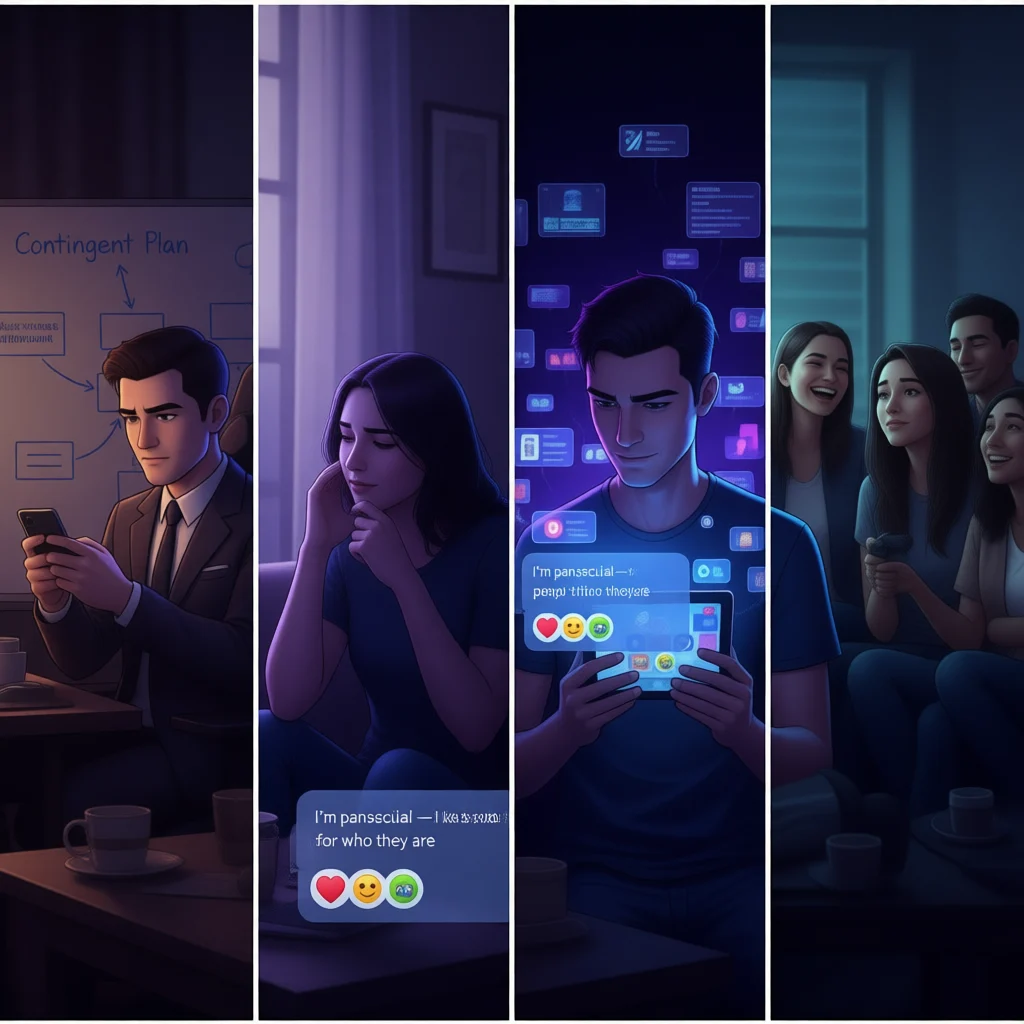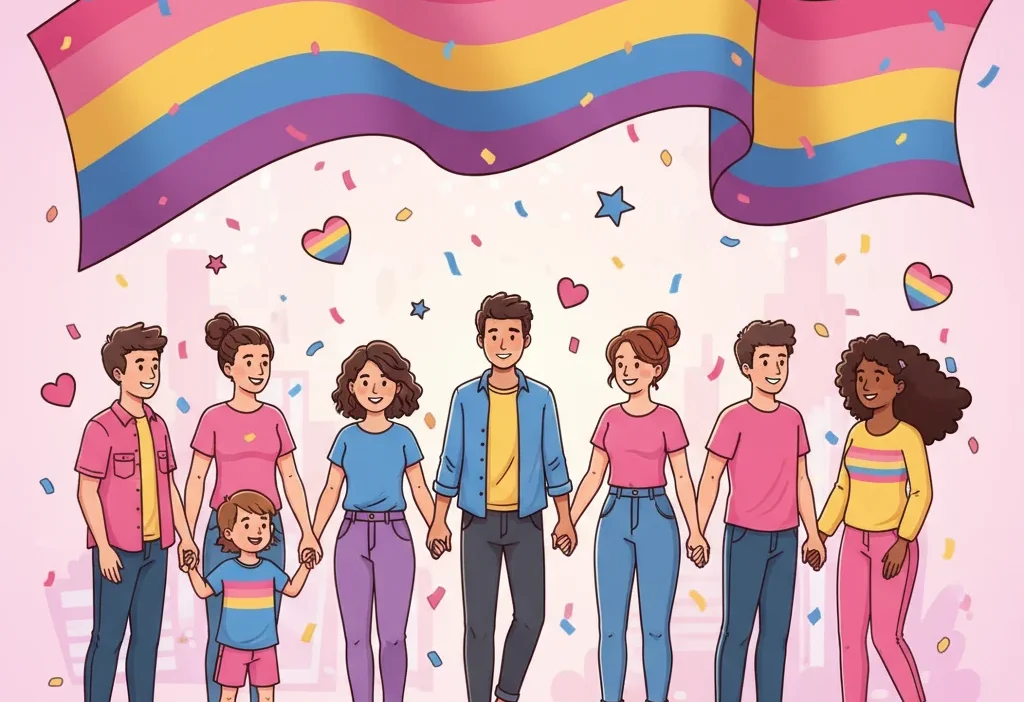Pansexual means being attracted to people regardless of their gender or sex. It’s a sexual orientation where attraction is based on personality, connection, and energy — not gender identity.
Ever seen someone describe themselves as pansexual on social media and wondered what that really means? You’re not alone. With Gen Z bringing inclusivity and identity to the front stage, terms like pansexual, non-binary, and genderfluid are becoming more common in daily life.
Understanding what pansexual means isn’t just about labels — it’s about recognizing diversity, respect, and human connection beyond traditional definitions. Whether you’ve seen it in a TikTok bio, a dating profile, or a Pride conversation, learning its meaning helps you communicate with more awareness and empathy.
So, let’s break it down — what does pansexual actually mean, where did it come from, and how is it different from bisexuality? 🏳️🌈
Definition & Meaning (What Does Pansexual Mean?)
Pansexual comes from two parts:
- “Pan” — meaning all (from Greek origins)
- “Sexual” — relating to attraction
Put together, pansexual means being attracted to people regardless of gender identity or biological sex.
That means a pansexual person may feel romantic or sexual attraction to men, women, non-binary people, transgender people, or anyone in between. It’s not limited to two genders — it’s about personality, connection, and vibe over labels.
Example in conversation:
🧑🎤 “So, you’re bi?”
🧠 “Not exactly — I’m pansexual. I like people for who they are, not what gender they are.”
In short, pansexuality is about attraction to people, not genders.

Background & History
The word pansexual isn’t new — it actually appeared as early as the 1900s, originally used by psychologist Sigmund Freud, though in a completely different context. He described “pansexualism” as the idea that all human behavior stems from sexual instincts.
However, in the late 20th and early 21st centuries, the LGBTQ+ community redefined pansexual into what we know today: a sexual orientation that includes attraction to all genders and identities.
Pansexuality gained more visibility with the rise of social media and Pride movements, especially after celebrities like Miley Cyrus and Janelle Monáe openly identified as pansexual. Now, it’s a proudly recognized orientation under the LGBTQ+ umbrella.

Usage in Daily Conversations and Social Media
You’ll see pansexual used across platforms like TikTok, Instagram, and Twitter (X) — especially during Pride Month or when people share their coming out stories.
Examples in use:
💬 “I just realized I’m pansexual — I fall for the person, not the gender.”
💬 “Being pan doesn’t mean I like everyone. It means I can be attracted to anyone.”
On dating apps like Tinder or Bumble, someone might select “Pansexual” to show openness toward people of all genders.
In short: Pansexuality is about attraction beyond the gender binary — a way of saying “I love people for their hearts, not their parts.” ❤️

Common Misconceptions About Pansexuality
Even though pansexuality is becoming more recognized, a few myths still linger. Let’s clear them up 👇
| ❌ Misconception | ✅ Truth |
|---|---|
| “Pansexual people are attracted to everyone.” | Nope! Attraction still depends on personality and chemistry, not gender. |
| “Pansexual and bisexual are the same.” | They’re similar but not identical — bisexuality typically refers to attraction to two or more genders, while pansexuality is gender-blind attraction. |
| “It’s just a trend.” | Pansexuality has been recognized for decades and is a valid sexual orientation. |
| “Pansexual people are confused.” | Not at all. They simply don’t base attraction on gender identity. |

Pansexual vs. Bisexual — What’s the Difference?
Here’s a quick comparison to make it super clear 👇
| Aspect | Pansexual | Bisexual |
|---|---|---|
| Definition | Attraction to people regardless of gender | Attraction to two or more genders |
| View of Gender | Gender is not a factor in attraction | Gender can be a factor |
| Common Phrase | “I love people for who they are.” | “I’m attracted to human beings.” |
| Inclusivity | Includes all gender identities (non-binary, trans, etc.) | Focuses on male/female, sometimes includes others |
| Example | Attracted to someone because of their energy/personality | Attracted to human beings |
Both are valid and part of the LGBTQ+ spectrum 🌈 — pansexuality just removes gender from the equation entirely.
How to Respectfully Talk About Pansexuality
- Use correct pronouns and language.
If someone says they’re pansexual, respect it — no “phase” jokes, please. - Don’t assume attraction.
Being pansexual doesn’t mean they’re into everyone. - Ask questions respectfully.
It’s okay to be curious — just be polite and open-minded. - Avoid stereotypes.
Don’t say things like “So you like everyone?” or “That’s confusing.”
Cultural and Global Recognition
Pansexuality is recognized and celebrated in many parts of the world — from Pride parades in the U.S. to youth movements in Europe and Asia.
The Pansexual Flag symbolizes visibility and pride:
- 💖 Pink = attraction to women
- 💛 Yellow = attraction to non-binary people
- 💙 Blue = attraction to men
As Gen Z pushes for more inclusive understanding, terms like pansexual are helping redefine love as something boundless and human.
FAQs
1. Does being pansexual mean I like everyone?
No, it means you can be attracted to anyone, but that doesn’t mean you are attracted to everyone.
2. Is pansexual the same as bisexual?
Not quite. Both involve attraction to multiple genders, but pansexual people are attracted regardless of gender identity.
3. Can pansexual people be in straight relationships?
Yes! Pansexuality is about attraction, not relationship status.
4. How can I support a pansexual friend?
Listen, respect their identity, and use inclusive language.
5. What’s the symbol for pansexuality?
The Pansexual Flag — pink, yellow, and blue stripes 🌈
Conclusion
In Summary, Pansexual means being attracted to people regardless of gender or identity.
It’s about seeing love as limitless — based on connection, energy, and emotion. Whether in friendships, relationships, or self-discovery, understanding pansexuality helps build a more inclusive and kind society.
So next time you see “Pansexual” in someone’s bio or hear it in conversation — you’ll know it’s not a trend, but a real, beautiful expression of human attraction 💫





